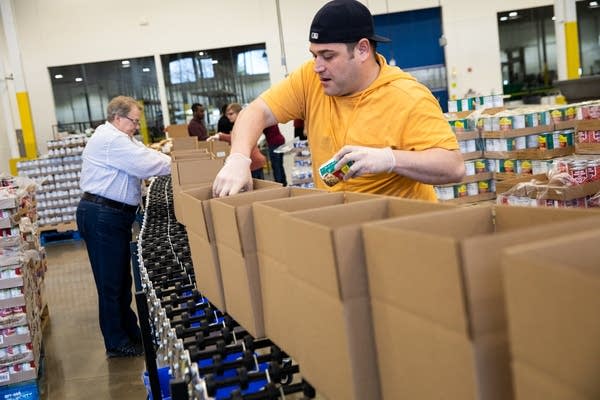Growing hunger projected across Minnesota

Go Deeper.
Create an account or log in to save stories.
Like this?
Thanks for liking this story! We have added it to a list of your favorite stories.
Hunger relief organizations are predicting a dramatic increase in hunger among Minnesotans in the next few months.
"Come Labor Day, when unemployment and other stimulus benefits run out, an additional 275,000 Minnesotans including 112,000 Minnesota kids will be hungry," said Second Harvest Heartland CEO Allison O'Toole.
That would translate to a 65 percent increase in food shelf demand across the state.
Second Harvest Heartland supplies food shelves in the Twin Cities and counties across southern Minnesota and Wisconsin. The organization anticipates an even higher 70 percent increase in demand for food in its service area. Some of the hardest hit areas are where grocery stores were damaged or destroyed during violent protests following the killing of George Floyd last month.
Turn Up Your Support
MPR News helps you turn down the noise and build shared understanding. Turn up your support for this public resource and keep trusted journalism accessible to all.
"We really haven't seen anything like this since the Great Depression," said O'Toole. "If you go back to the great recession in 2008 and 2009, we were seeing on average a 20 percent increase in volume."
According to data analyzed for Second Harvest Heartland by McKinsey and Company, a management consulting company, the demand for food will peak in September. The analysis included the impact of the economic recession, the availability of food from various sources, access to safety net programs such as the federal Supplemental Nutrition Assistance Program or SNAP and unemployment benefits.
Second Harvest Heartland projects it will need to distribute 75 million pounds of food between July and December 2020, a 70 percent increase over 2019 distribution for the same period.
The increased need comes at a time when the food supply chain has been disrupted by the coronavirus pandemic.
"It makes it more difficult and expensive for us to source food, we generally rely on a number of donations from manufacturers and retailers, those are down right now, and so we're having to buy more food just at the same time when food becomes more expensive," said O'Toole.
O'Toole expects the cost of additional food over the next six months to exceed $17 million.


